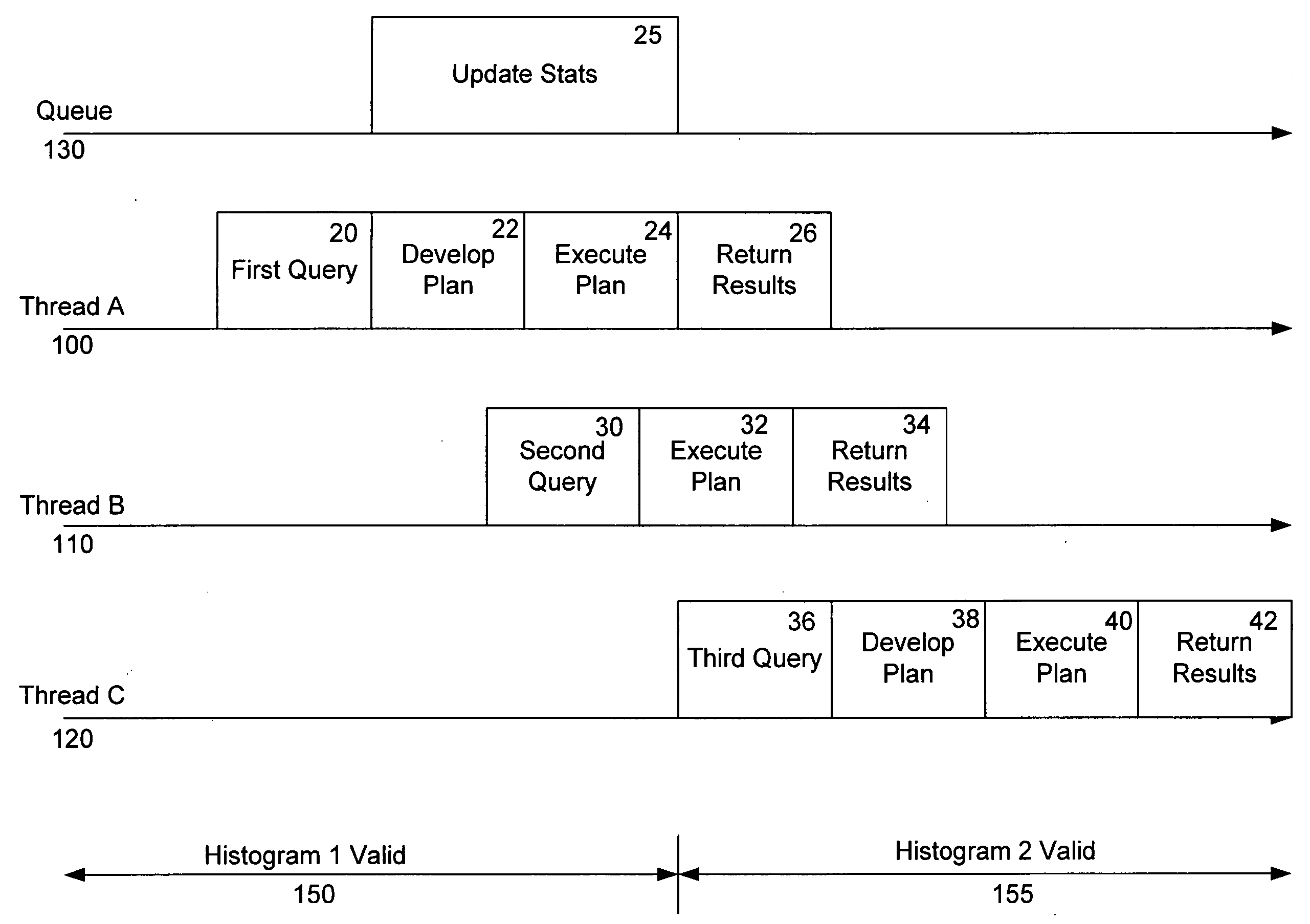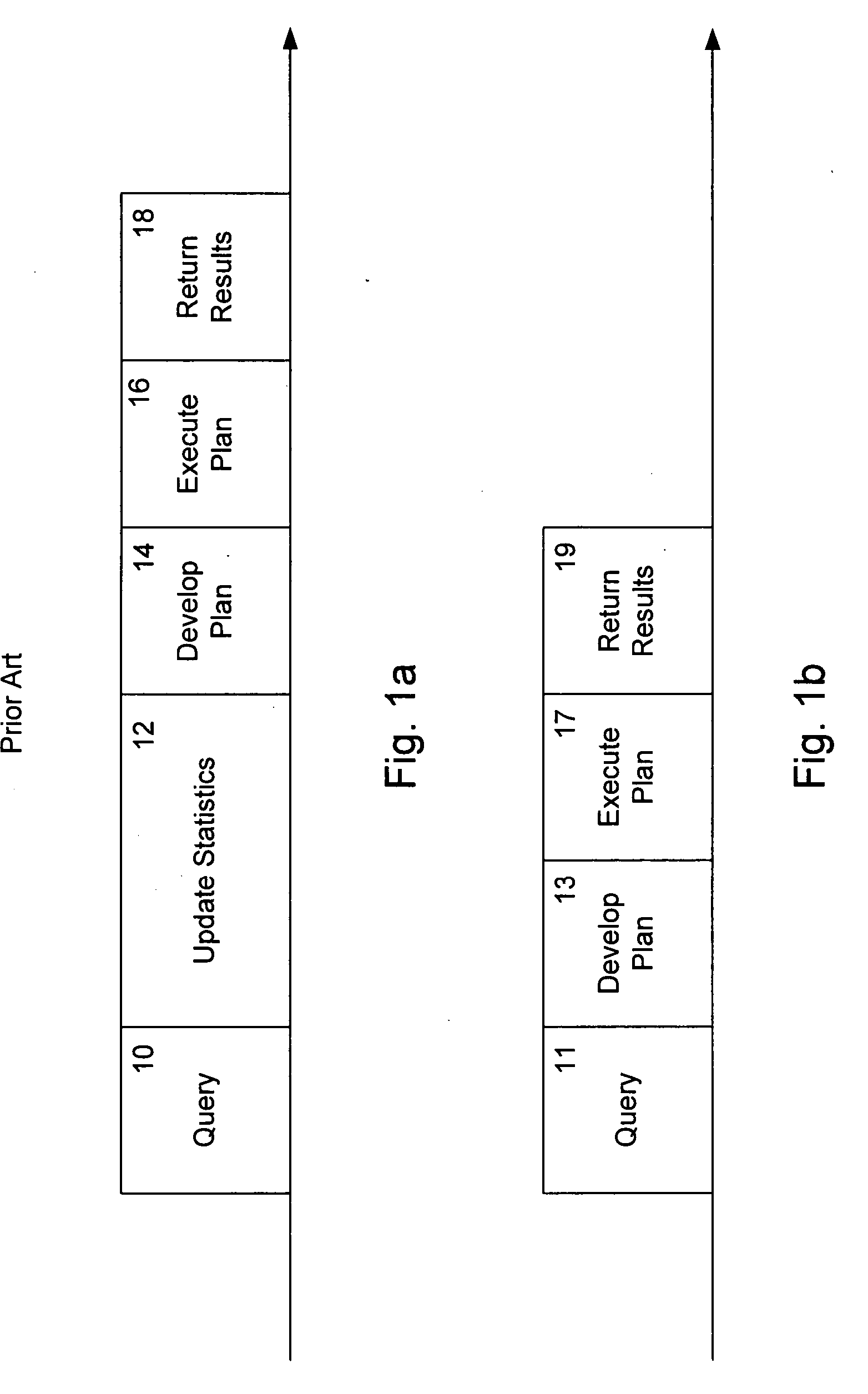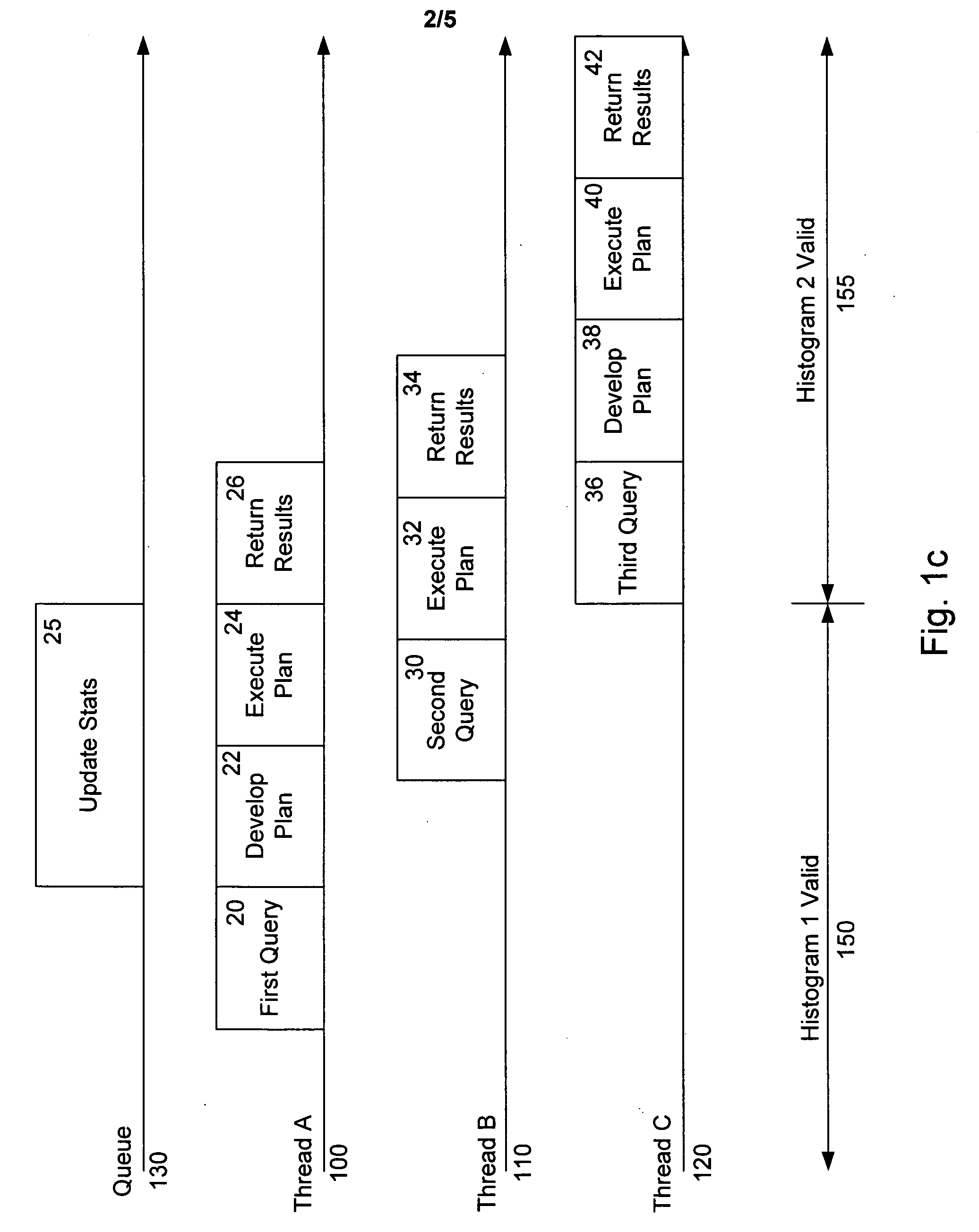System and method for an asynchronous queue in a database management system
a database management system and asynchronous technology, applied in the field of software query optimization, can solve the problems of large wait time, insufficient statistic properties of the database, such as the types of tables and indexes available, and the prior art scheme that requires expensive computer resource processing of statistics. to achieve the effect of better utilization of computer resources
- Summary
- Abstract
- Description
- Claims
- Application Information
AI Technical Summary
Benefits of technology
Problems solved by technology
Method used
Image
Examples
Embodiment Construction
[0017] Current DBMS optimization processes introduce various sources of response-time unpredictability. Expensive computer resource operations such as updating statistics, creating statistics, and recompiling, are triggered as needed according to search requirements of the query. For example, the query that triggers the time and resource expensive operations has to wait until the extra process of statistics update is complete before processing to provide query results. This makes total response times unpredictable and causes applications with aggressive timeouts to fail in the field.
[0018] For example, consider the case where a DBMS customer has a large and growing database table. Many single-row updates, inserts, and queries may happen per second. The customer application may use a DBMS such as SQL Server® available from Microsoft® in Redmond, Wash. The customer application may call the DBMS with 10 second timeouts, since all of its queries are simple. Whenever a query comes in, t...
PUM
 Login to View More
Login to View More Abstract
Description
Claims
Application Information
 Login to View More
Login to View More - R&D
- Intellectual Property
- Life Sciences
- Materials
- Tech Scout
- Unparalleled Data Quality
- Higher Quality Content
- 60% Fewer Hallucinations
Browse by: Latest US Patents, China's latest patents, Technical Efficacy Thesaurus, Application Domain, Technology Topic, Popular Technical Reports.
© 2025 PatSnap. All rights reserved.Legal|Privacy policy|Modern Slavery Act Transparency Statement|Sitemap|About US| Contact US: help@patsnap.com



